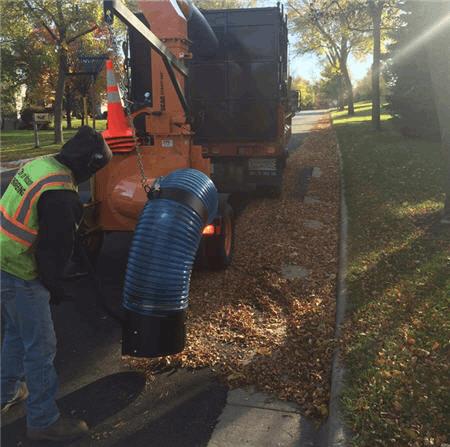The Fall Of Water Quality: Blame It On The Leaves

By Kevin Westerling,
@KevinOnWater
As sweater weather approaches, it’s a good time to revisit a USGS report from last year highlighting the importance of leaf removal for keeping phosphorus and nitrogen out of urban stormwater.
Sometimes the solutions to life's challenges are right in front of us, yet go unrecognized. Those beautiful tree-lined streets, the colored foliage, and the fall — they can all conspire against your water quality if not properly addressed.
Organic debris (i.e., leaf litter), especially as it gathers on streets, will spike stormwater with nutrients. The excess phosphorus and nitrogen load into watersheds can be a major problem for municipalities, as these nutrients cause eutrophication and harmful algal blooms (HABs). HABs deprive water of oxygen, essentially suffocating aquatic life, while also producing toxic cyanobacteria dangerous to humans.
The connection may be simple, but it may also be overlooked or underestimated: Regular leaf removal can significantly reduce nutrient concentrations and improve water quality. And when water managers have run out of other levers to pull, it is an effort that should be prioritized.
A 2016 report by the U.S. Geological Survey, led by USGS scientist and report author Bill Selbig, confirmed the impact.
“Our study found that leaf removal is one of the few treatment options available to environmental managers for reducing the amount of dissolved nutrients in stormwater,” said Selbig. “These findings are applicable to any city that is required to reduce phosphorus loads from urban areas.”
The study focused on the months from April through November over the course of three years (2013 to 2015) in Madison, WI, finding that timely leaf removal reduced total phosphorous loads by 84 percent and nitrogen loads by 74 percent. It further concluded that organic debris was responsible for 56 percent of the annual total phosphorus yield (excluding winter) with no leaf removal, but was just 16 percent of the yield when leaves were cleared.
Timing is pertinent for optimal nutrient mitigation. The City of Madison collected leaves and cleaned the streets once per week from late September through mid-November, but would also endeavor to do so prior to a rain event.
Efficiency is also paramount. To reduce debris, residents were asked to pile their leaves adjacent to the street. The clean-up task was carried out through municipal leaf collection (see below), street cleaning, and blowers.

Photo credit: Bill Selbig/USGS
It makes sense that this fix would work, but the USGS study backs the hunch with data, compelling municipalities with nutrient issues to employ a diligent leaf-removal program once autumn arrives.
